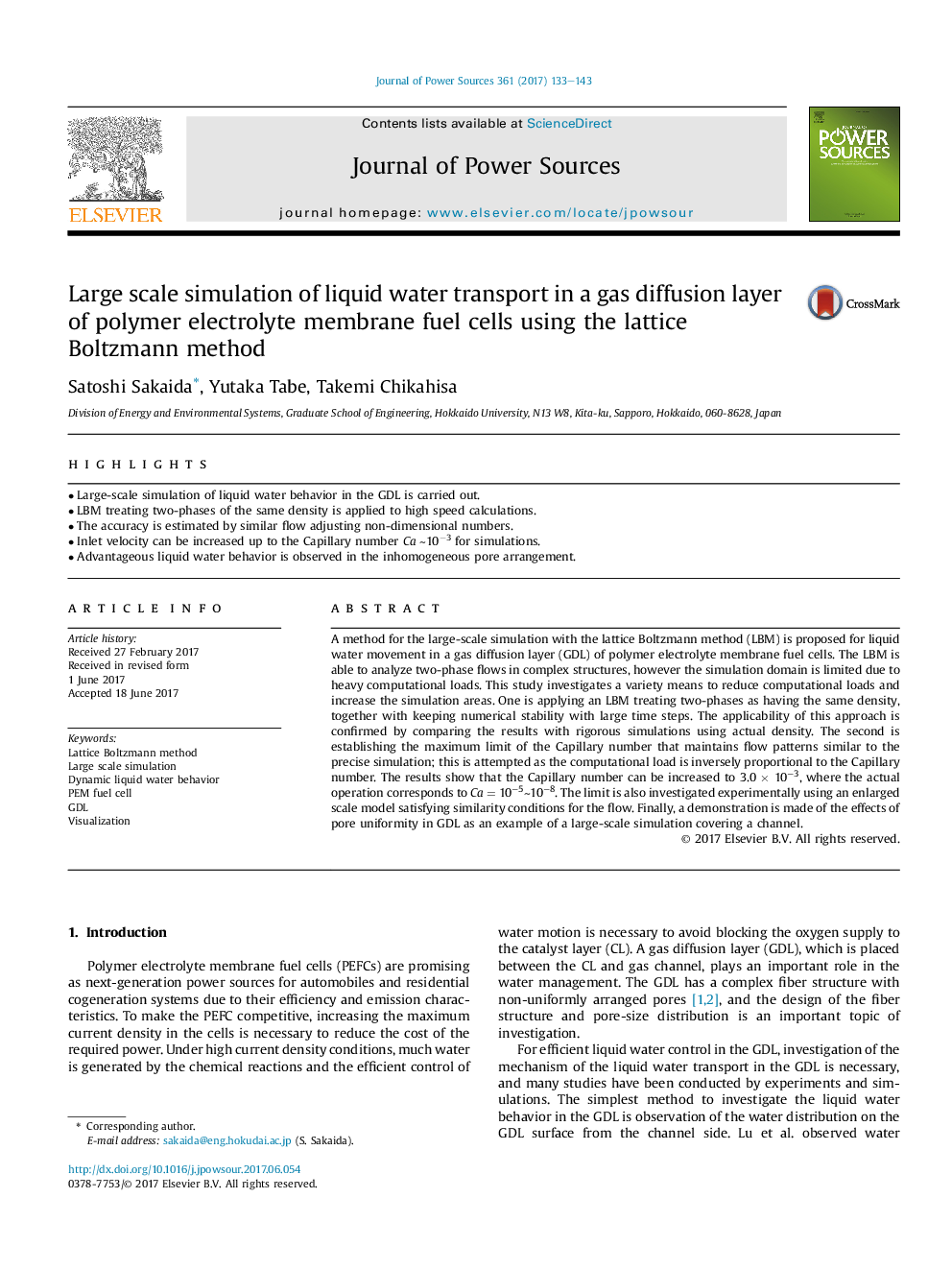| Article ID | Journal | Published Year | Pages | File Type |
|---|---|---|---|---|
| 5148880 | Journal of Power Sources | 2017 | 11 Pages |
Abstract
A method for the large-scale simulation with the lattice Boltzmann method (LBM) is proposed for liquid water movement in a gas diffusion layer (GDL) of polymer electrolyte membrane fuel cells. The LBM is able to analyze two-phase flows in complex structures, however the simulation domain is limited due to heavy computational loads. This study investigates a variety means to reduce computational loads and increase the simulation areas. One is applying an LBM treating two-phases as having the same density, together with keeping numerical stability with large time steps. The applicability of this approach is confirmed by comparing the results with rigorous simulations using actual density. The second is establishing the maximum limit of the Capillary number that maintains flow patterns similar to the precise simulation; this is attempted as the computational load is inversely proportional to the Capillary number. The results show that the Capillary number can be increased to 3.0 Ã 10â3, where the actual operation corresponds to Ca = 10â5â¼10â8. The limit is also investigated experimentally using an enlarged scale model satisfying similarity conditions for the flow. Finally, a demonstration is made of the effects of pore uniformity in GDL as an example of a large-scale simulation covering a channel.
Related Topics
Physical Sciences and Engineering
Chemistry
Electrochemistry
Authors
Satoshi Sakaida, Yutaka Tabe, Takemi Chikahisa,
